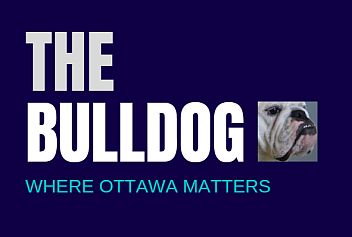Give Air Passengers Options: EVERSON
By Warren Everson
Canadians are frustrated with airlines.
Prices are high – so high that millions of Canadians cross the border to access cheaper flights in the U.S.
The post-covid surge in 2022 created massive and infuriating delays and cancellations. Airline horror stories filled the media.
The government’s response was to intervene on behalf of customers. It presented new legislation to “close loopholes” (including those relating to safety) in the Passenger Protection regulations. It increased penalties to eye-popping levels. A 9-hour delay entitles passengers to $1,000 compensation. (On a large aircraft such as a Boeing 777, the penalties could theoretically be $450,000.)
Not surprisingly, there is now a staggering backlog of complaints at the Canadian Transportation Agency, topping 74,000 this August.
But the best way to deal with consumer frustration isn’t bureaucratic inefficiency, it’s competition. The government’s goal should be to ensure travellers have satisfactory choices. Yet Canadian policy is entirely passive.
And by now it should be clear to everyone that competitors are likely to lose a fair fight against the incumbents. The majors are too well established, talented and too well capitalized.
The casualty list of competitors who have failed against the incumbent airlines makes a long, dismaying list.
CanJet and Swoop, Nationair, Canadian Airlines, Skyservice, Canada Jetlines, Lynx, Canada 3000, Greyhound Air, Roots Air and Sunwing … Only Porter Airlines has successfully grown in this marketplace, helped immeasurably by having, in effect, its own airport in the heart of our largest city.
What is Canada’s official policy on airline competition?
The Canadian Transportation Act says:
“a) competition and market forces, both within and among the various modes of transportation, are the prime agents in providing viable and effective transportation services;
(b) regulation and strategic public intervention are used to achieve economic, safety, security, environmental or social outcomes that cannot be achieved satisfactorily by competition and market forces”
So, it’s clear enough. We favour competition, but we’ll intervene when market forces aren’t doing the job.
So … aren’t we there in aviation?
Canada is just as dominated now by the two major carriers as it’s ever been.
What can a government do to nurture successful competition?
So far, most new entrants have challenged the incumbents where they are perhaps strongest: in the inter-city market, marketing themselves as “ultra-low cost.”
But the very high cost of government and airport charges has frustrated that approach. It seems impossible to actually be “ultra-low cost.”
Canada needs a different approach. Instead of using bureaucracy to hold airlines accountable for service, we need to tilt the field towards domestic competitors and give consumers viable choices.
There are about 20 independent air carriers in Canada providing scheduled service to about 200 communities. Most connect to at least one hub, some fly the same 737s and Dash aircraft the majors do. Most have been in business for decades.
With some help this community can grow to offer more competition. But to achieve this, the government will need to put its thumb on the scale, providing advantages to the regional fleet that are not available to the majors.
Consultation with these airlines would help identify the key issues that constrain their growth. But one seems obvious: The biggest expense for airlines is aircraft. Whether they are leasing or buying, the cost of modernizing the fleet is forbidding. That’s why most regional airlines use older aircraft, which are more expensive too. If the government wants more competition, helping the regionals upgrade their fleets might be the most important measure.
A host of smaller items could be considered, as consultations produce suggestions.
The Ottawa market itself is a good illustration: Air Canada and WestJet dominate, Porter has grown and diversified. But beyond them, the only competition is provided by three regional airlines – Canadian North, PAL and Air North – which could provide increasing competition … with some help.
But is it heretical for government to contemplate such a heavy-handed intervention into a free market?
Consider the context. Much of Canada’s economic history has been the transition from monopolies into competitive markets.
If we want a business marketplace, with vigorous competition, it takes more than wishful thinking. This process requires an aggressive, interventionist approach:
When the Mulroney government deregulated railways, banking, telecommunications, the Tories intruded into the market to benefit competitors. Bell Canada is obliged to host competitors on its towers. Spectrum set-asides aided the mobile competitors. Railway customers were provided regulatory tools like “Competitive Line Rates” to mimic competition.
All of these and more were quite intrusive. But a laissez faire approach will not work against dominant, entrenched and skillful former monopolies.
Isn’t this unfair? Perhaps. But somehow CN Rail and CPKS are flourishing. Freight rates are lower but the railway’s stock values rose. Our financial sector seems to be managing alright too.
In any case, passengers milling around a crowded terminal, furiously rescheduling their flights , aren’t chiefly concerned about fairness to Air Canada. They want competitive options.
Warren Everson is a former Chief of Staff to the Transport Minister and a government-relations consultant. He is president of Saramac Consulting Services.
For You:
Kelly Should Be Reprimanded: Integrity Commissioner
Why We Are Right: City Of Ottawa
Service Key To Best OC Transpo: BENN
Bookmark The Bulldog, click here




Latest Comments